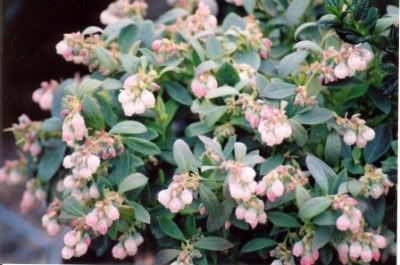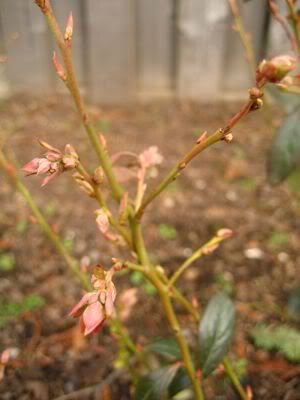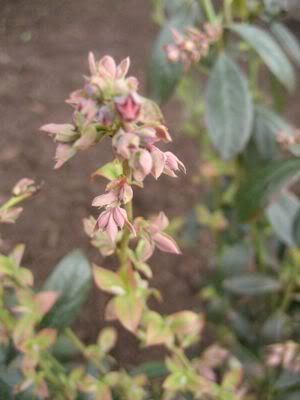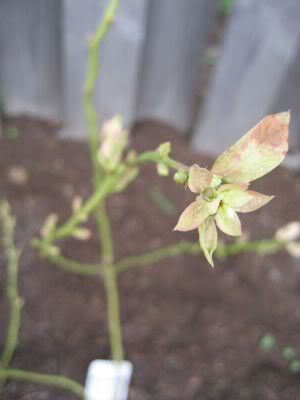Botanical Name: Vaccinium corymbosum 'Sunshine Blue'

Planting Time: Fall
Flowering Time: Dainty, waxy, bell-shaped, white flowers appear in May.
Harvesting Time: Mid Season - June. Birds love the fruit, so plants may need to be covered with netting as the fruit begins to ripen. Large tangy berries.
Light: Full Sun - 6 hours to partial shade
Girth: 3' x 3'
Soil: Blueberries are best grown in acidic (pH 4.8-5.2), organically rich, well-drained soils in full sun to part shade. Young plants need extra phosphorus to encourage good root development. Look for a fertilizer that has phosphorus, P, in it(the second number on the bag.) Apply recommended amount for plant per label directions in the soil at time of planting or at least during the first growing season. It is best to avoid fertilizing late in the growing season. Applications made at that time can force lush, vegetative growth that will not have a chance to harden off before the onset of cold weather.
Growth rate:
Prune: Southern highbush plants have low winter chilling requirements. Chilling is a measure of accumulated hours of temperatures below 45°F in the dormant season. Low-chill varieties can be pruned after the first flush of fruit to induce a second crop later in the year. Prune plants as needed in late winter beginning the third year after planting.
Other: Requires consistently moist soil; do not let dry out between waterings. Although blueberries are self-fertile, cross-pollination produces the best fruit crop (larger berries and larger yields). Dark-green leaves turn eye-catching shades of red and purple in fall. Reddish stems can be attractive in winter. USDA Hardiness Zones 5-9.
Year Planted: Fall 2008 (Plants already two years old)
03/02/09

03/23/09

Common Name: Blueberry Bush (Northern highbush blueberry)
Botanical Name: Vaccinium corymbosum 'Berkeley'
Planting Time: Fall.
Flowering Time: White, sometimes pink tinged flowers to 1/2 inch across are held in pendant terminal racemes.
Harvesting Time: Large mild berries. Mid to late season harvest / June - July.
Light: Sun to Partial Shade
Girth: Height: 10-12 ft. (3-3.6 m) Spacing: 6-8 ft. (1.8-2.4 m) (I've seen other descriptions that note it only grows 6 - 8 ft)
Soil: 4.6 to 5.0 (highly acidic). Young plants need extra phosphorus to encourage good root development. Look for a fertilizer that has phosphorus, P, in it(the second number on the bag.) Apply recommended amount for plant per label directions in the soil at time of planting or at least during the first growing season. It is best to avoid fertilizing late in the growing season. Applications made at that time can force lush, vegetative growth that will not have a chance to harden off before the onset of cold weather.
Growth rate:
Prune:
Other: Introduced in 1949 it is hardy in zones 5-8. Requires consistently moist soil; do not let dry out between waterings. Bright yellow wood in the winter contrasts nicely with red wooded varieties. Avoid planting in colder exposed areas or areas prone to frost pockets.
Year Planted:
03/30/09

No comments:
Post a Comment